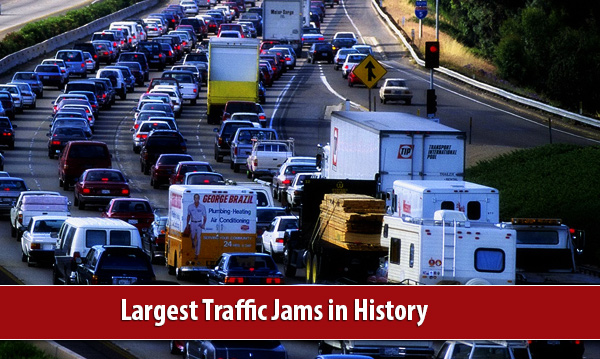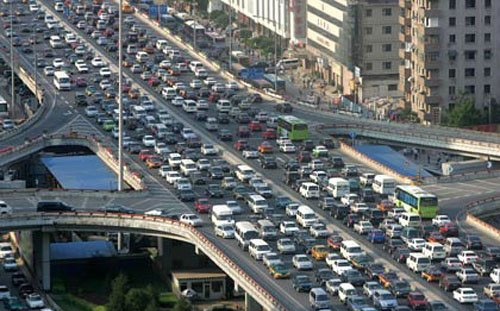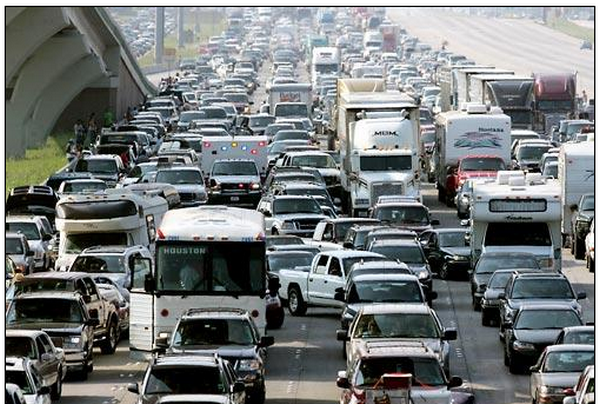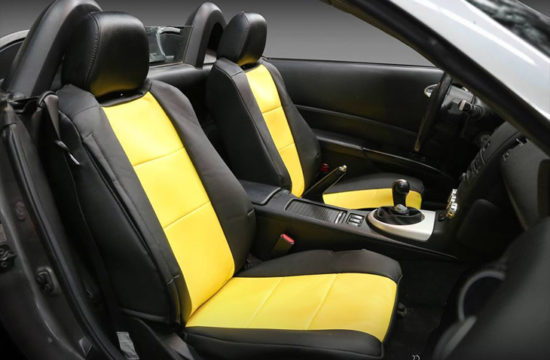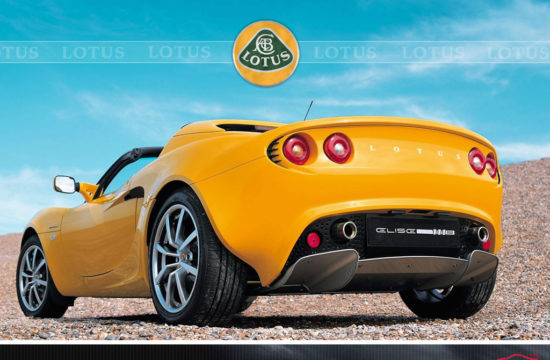Even though two hundred years ago cars didn’t even exist, today they are part of our daily life, whether we like it or not. And ever since the number of cars started to grow, the world was confronted with an entirely new problem, traffic jams. It’s one of the drivers’ worst nightmares: a lot of anger, gallons of wasted fuel and, of course, a lot of wasted time spent doing absolutely nothing, just waiting to move 10 more feet.
Almost all of the world’s large cities are facing this problem and there’s not much we can do, even though authorities are doing their best to make traffic more fluent and reduce these traffic jams as much as possible. But look at the bright side: if you think being stuck in a traffic jam for an hour or two is bad, then let us show you something that will make this look like a small vacation compared to what these drivers had to face.
So let’s take a look at the world’s worst traffic jams:
Paris (February 16, 1980)
With a total population of around 12 million people, Paris is one of the world’s largest cities. Also, with 6 million cars registered in the Paris metropolitan areas alone, is one of busiest. Even though the numbers were not as high in 1980, the French capital holds the current Guiness World Record holder for the longest traffic jam ever reported. The traffic jam we’re talking about occurred on Ferbruary 16, 1980on the French Autoroutethat connects Paris with Lyon and it was caused by a massive number of Parisians returning from their skiing holidays in the French Alps. The bad weather caused several accidents which soon blocked the extremely busy highway, creating a huge 109 mile (176 kilometers) traffic jam. Motorists were forced to stay stuck on the road for hours, but the highway was cleared in the end.
As an interesting note, according to estimates made by French authorities, traffic in Paris is expected to double every 20 years, so unless serious measures are taken, France could expect something similar to happen anytime soon.
Beijing (August 14, 2010)
While the French traffic jam is the longest in history, what happened in China in 2010 is widely regarded as the traffic jam with the longest duration in history. With a total population of more than 21 million people, the Beijing metropolitan area is the sixth most populated city in the world. Also, China’s car industry is currently reporting an unprecedented boom, the country recently becoming the world’s largest car market, with more than 13 million new vehicles registered each year. Today, there are a total of 70 million registered cars driving in China and when you compare it to the 5.5 million cars that were registered back in 1990 you’ll get an idea of how traffic looks like over there.
But what happened on August 14, 2010 is incredible. The China National Highway 110 (G110) and the Beijing Tibet Expressway (G6) are some of the busiest highways in the Asian country, connecting the capital, Beijing, to Tibet’s capital, Lhasa and the autonomous region of Inner Mongolia. In 2008, the largest open pit coal mine in China was opened in Inner Mongolia and because railroad capacity is insufficient, the coal is transported to other regions mainly using the China National Highway 110, making it one of the busiest roads in the country. According to reports by the Chinese authorities, traffic on this highway grew 40 percent each year since the coal mines were opened, with more than 17,000 trucks using it each day.
Well, in August 2010, a combination of factors led to the huge traffic jam. First of all, there was a spike of heavy trucks that transported coal from Inner Mongolia to Beijing and the Hebei Province. Also, during the first of week of August, road work began on some sectors of the highway, road work which, ironically, was supposed to ease congestion, but which reduced the road capacity by around 50%. All these factors contributed to a colossal traffic jam that occurred on August 14, 2010 which spread on a distance of 60 miles (approximately 100 kilometers). After the first cars got stuck, several minor crashes and breakdowns also occurred, increasing the problem.
Even though authorities took a lot of measures to speed up traffic, such as forbidding new trucks from entering the highway and allowing more trucks to enter Beijing, the line moved extremely slow (some drivers reported they moved less than a mile per day) and some drivers were stuck for as long as nine days. Nine days! Of course, local “entrepreneurs” immediately seized the opportunity and improvised road side shops, with prices ten times higher than usual (for example, a bottle of water that normally cost 1 yuan was sold for as much as 10 yuan). After the congestion was cleared up, road work in the area continued for another month, but except some minor traffic slowdowns around toll booths, no other major problems were reported.
Border between East and West Germany (April 12, 1990)
As you probably know, following World War II Germany was divided in two parts, East Germany, under Soviet control and West Germany, controlled by the United States, France and Britain. This happened in 1949 and 41 years later, following protest by East Germans, the country was reunited. Following these events, the 1990 Easter holiday (it was on April 15th), was the first Easter in the last 40 years when there were no borders between East and West Germany and people were allowed to walk or drive freely across all Germany.
And what followed went straight into the Guiness Book of World Records, because during the four-day weekend, 18 million cars crossed the inner German border both ways, creating the largest traffic jam in history. Despite preventive measures being taken weeks before (52 border crossings were created for the holiday), TV reports showed huge lines at the major border crossings, some of them as long as 30 miles (50 km). The total length of jammed highways was estimated at around 260 miles (420 km).
Like we said, traffic came from both ways. East Germans, who were used to the socialist centrally planned economy rushed to the West to see their families and enjoy the better life there, while West Germans were tempted to visit all the interesting places East Germany had to offer. Before the borders opened, access from one part of the country to the other, even for family matters, was extremely difficult.
Tokyo (August 21, 1990)
More than 35 million de people. That’s the estimated population of the Tokyo metropolitan area, the largest one in the world and almost 10 million more than the second place, Indonesia’s capital Jakarta. And even though owning a private car is not the top priority in the Japanese capital (40 million people use the highly efficient public transportation system each day), there are still more than 4 million registered cars. Which means that every time all these people get out or return to Tokyo there are problems.
And that’s exactly what happened on August 21, 1990 when many Tokyo citizens where returning from their summer holiday back to the city. On August 15, all of Japan celebrates the Bon Festival, a Buddhist custom honoring the spirits of ancestors. During this holiday, families usually get together to their home towns and clean their birth houses or take care of their ancestors’ graves. And while this usually doesn’t represent an issue and the road infrastructure can handle all the traffic, that year an unfortunate coincidence happened. Because Tokyo authorities decided to take measure and prevent potential human lives being endangered by the upcoming Winona Typhoon, so parts of the city were evacuated.
So when the fleeing cars met the ones returning from the summer holiday, a huge traffic jam occurred, spanning on more than 80 miles (130 kilometers). That’s impressive, especially if you take into consideration that Japan is just an island, and not the biggest one. The traffic congestion happened on a highway that connects the Shiga and Hyogo prefectures in the Western part of Japan and more than 15,000 vehicles were involved. According to the Japan Highway Corporation, the former public company in charge with the highway network of Japan, this traffic jam is the largest one in the history of the country.
Houston, Texas (September 22, 2005)
2005 was a tragic year for the United States, with the country facing the most terrible hurricane season in history. That year, America was struck by three of the six most intense Atlantic hurricanes ever recorded (Wilma, Rita and Katrina), causing hundreds of lives to be lost and billions of dollars in damages. Just one month after Katrina devastated the Gulf Coast, hurricane Rita hit and affected Florida, the Mississippi Valley, Louisiana and parts of Texas. Houston, the largest city in Texas, didn’t get too much damage, except for some electricity blackouts, but people rushed to evacuate the city, to make sure they’re safe.
Unfortunately, most of them used the I-45 highway and headed to Dallas. Houston’s Mayor Bill White and the other local authorities recommended people to evacuate the city, but they were unable to predict the large number of people that would actually leave Houston, so a massive traffic jam formed, with the congestion spreading on almost 100 miles (160 kilometers). And since the authorities were caught off guard, what followed was complete chaos. Cars were stuck for more than 24 hours, many ran out of gas, water or food and the temperatures reached 100 degrees. And if that wasn’t enough, some drivers went on and took over the other lines, causing a series of head on collisions which further increased the mess. Also, small towns were overwhelmed with the large number of people passing through and soon all fuel, drinks and food supplies were over.
According to official estimations, more than 2 million people were stuck in what is probably the worst traffic jam in the history of the United States. In the end, feeling helpless, the Mayor asked for assistance from the military to give those stranded access to fuel and water. During the congestion, many people decided to return to Houston, where they thought they had better chances than being hit by the hurricane in an open field. Fortunately, hurricane Rita calmed and Houston and its surrounding areas weren’t seriously hit. But the failed evacuation was an important lesson for how future similar actions should be handled.
Every winter in Moscow, Russia
It’s a known fact that Moscow (the entire Russia actually) doesn’t have the most pleasant climate in the world and each winter here is a true adventure(Hitler knows what we’re talking about). The country’s capital is a huge city, with more than 15 million people. The total number of registered cars in the Moscow area is around 5 million and even though that’s as much as Tokyo (which is more than twice the size of Moscow) and half of what’s in New York (which is not much larger than Moscow), the main problem the Russian capital has is the lack of space. Residential housing, office blocks and shopping area are extremely dense and this causes major traffic jams throughout the city and its surrounding areas.
And these traffic jams happen on a daily basis, but get even worse when winter begins (and the Russian winter is one terrifying bastard). However, you’d think they are ready for it, considering that Russians lived there long enough to know what they should expect. Well, the only thing they are ready for is expecting to spend a lot of time in their cars on their way to and from work.
An example of such traffic jam occurred on December 29, 2010, when the holiday shopping madness and heavy snow contributed to one of the most serious congestions Moscow has ever seen. According to estimations made by local authorities, a combined distance of more than 2,000 miles (3,200 km) was congested. To get an idea of what that means, it’s roughly the distance between Moscow and Nantes (a city on the Western coast of France, on the other side of Europe).
But there are also more serious situations, when winter threatened the lives of drivers, like it happened two years ago. In 2012, heavy snow caused a major traffic jam on a sector of the M-10 Highway that connects Moscow and Saint Petersburg. Cars and trucks were stuck in a congestion that spread for more than 100 miles (160 kilometers). Even though the Russian Emergency Minister went into full alert, the extreme weather didn’t allow them to ease the congestion, which lasted for three days. During this time, Russian officials installed emergency tents that provided warm food, drinks and psychological counseling to those stranded on the highway.
Daily rush hour in Sao Paulo, Brazil
Well, if you think the traffic in your city is bad (and you’re not from Sao Paulo), that’s nothing compared to what those driving in the Brazilian capital have to face each day during rush hour. Sao Paulo is a huge city, being the seventh largest city in the world with a total metropolitan population of more than 20 million people. And while other large cities like Moscow or Tokyo only have around 5 million registered cars, traffic in Sao Paulo is worse, with almost 8 million cars being registered here.
Besides the large number of cars, Sao Paulo also has another major problem, the inadequate infrastructure. Even though efforts are currently being made to improve the road network throughout the city (especially with the FIFA World Cup taking place this summer), many Brazilian drivers complain about the bad infrastructure. And these factors contribute to Sao Paulo being a nightmare for drivers each day and brought the city the unofficial title of the “worst daily traffic jams in the world”. Each day, more than 160 miles (250 km) of the city’s roads are jammed and the record was set in 2009, when the congestion occurred on 183 miles (295 km), about 35% of the city’s entire road network.
Among the measures the city is currently taking is the construction of Rodoanel Mario Covas, a motorway around the center of Sao Paulo’s metropolitan area that is supposed to ease the congestion on the city’s other two highways, Pinheiros and Tiete. So far, several sections of the Rodoanel have been finished, but daily traffic jams are still a problem for many Brazilian drivers.
So what do you think now? Still complaining about traffic?

